15 Plants That Provide Fall Food for Bees and Butterflies
As the days shorten and temperatures drop, fall can be a challenging time for bees and butterflies. However, there are certain plants that continue to provide nourishment throughout the season. By incorporating these plants into your garden, you can help sustain these pollinators until spring. Fall gardens can be as beneficial as they are beautiful, offering both color and purpose. Let’s dive into which plants make a difference for these vital creatures.
This post may contain affiliate links, which helps keep this content free. Please read our disclosure for more info.
Goldenrod (Solidago)
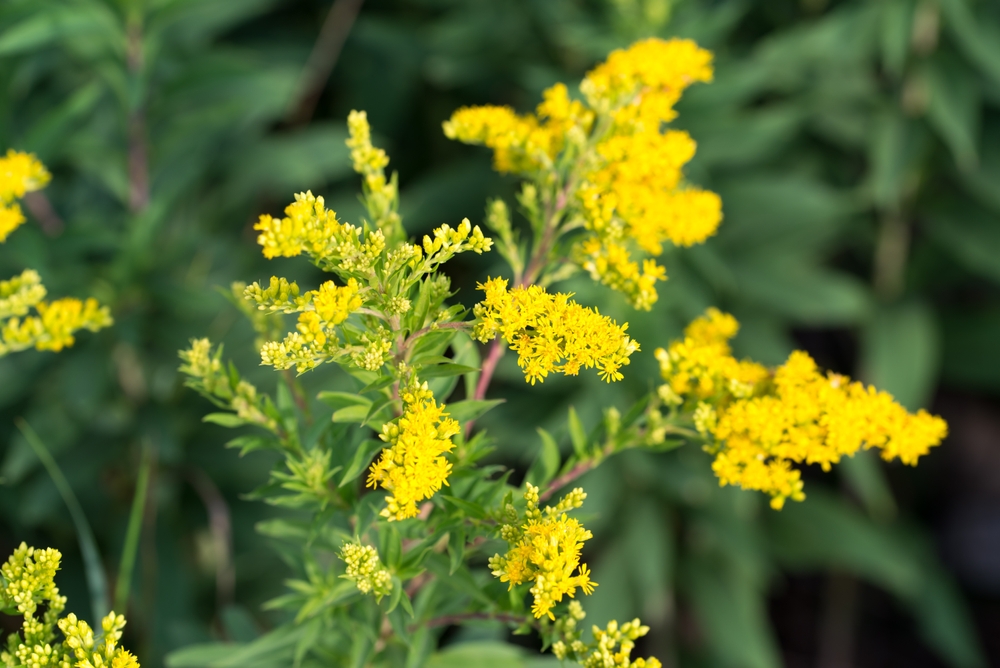
Goldenrod blooms in late summer and continues into fall, providing a rich nectar source for bees and butterflies. Its bright yellow flowers attract pollinators, helping them store energy for the colder months ahead. The plant is easy to grow in many soil types and can thrive in both sun and partial shade. Goldenrod is a key fall plant in North America, supporting many species of insects.
Aside from its value to pollinators, goldenrod also adds a burst of color to your garden in the fall. It grows in clusters and forms tall spikes covered in tiny flowers. The nectar-rich blooms are particularly beneficial to migrating species, including monarch butterflies. Consider adding goldenrod to your garden for a beautiful, pollinator-friendly plant.
Aster (Aster spp.)
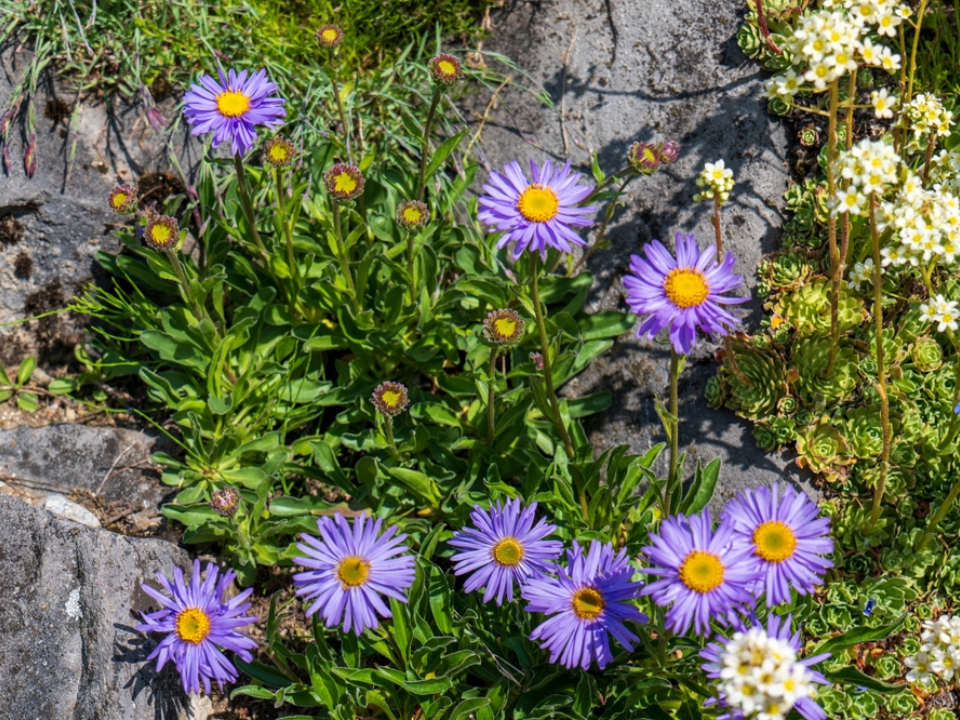
Asters are well-known for their vibrant blooms that come alive in fall, making them an important food source for bees and butterflies. Their wide variety of colors, from purple to white, attracts a range of pollinators. The plants are relatively easy to maintain, making them a great addition to any garden. They thrive in full sun and well-drained soil, though they will tolerate some shade.
Asters produce nectar-rich flowers that help keep pollinators active as the season winds down. The long-lasting blooms provide sustenance to late-season pollinators, ensuring that bees and butterflies have enough energy to survive cooler temperatures. Many butterfly species, including the painted lady, frequent aster flowers. This plant is a must-have for a garden focused on supporting local pollinators.
Sedum (Sedum spp.)
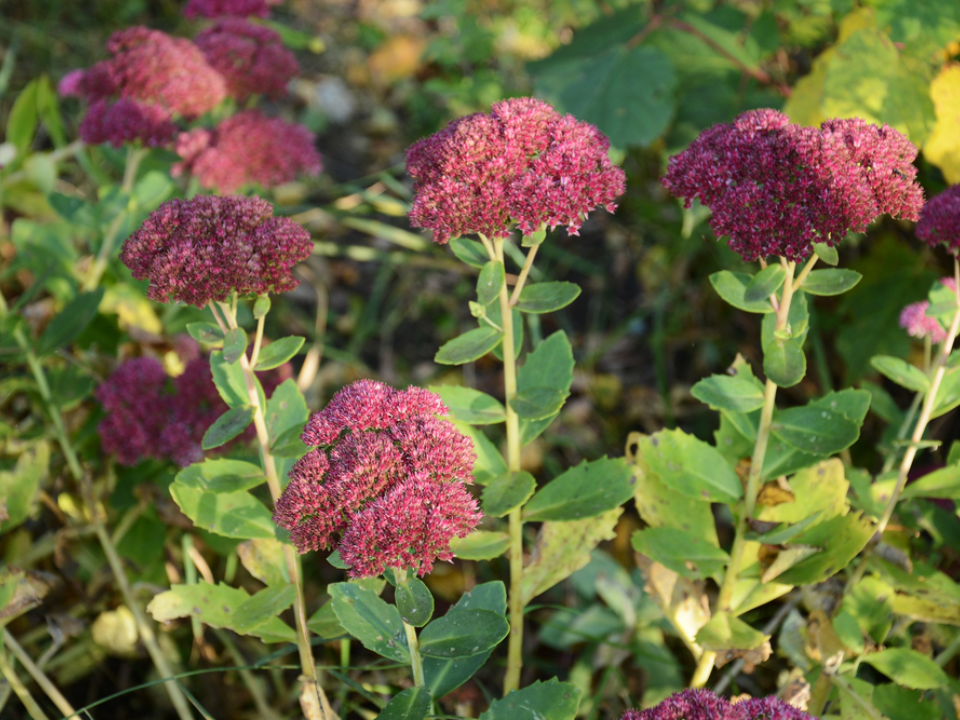
Sedum, often known as “Autumn Joy,” is a late-season bloomer that provides an essential food source for pollinators. Its flat-topped clusters of flowers are easy for bees and butterflies to land on. The plant’s ability to tolerate dry conditions makes it a resilient choice for gardens in need of low-maintenance pollinator plants. Sedum thrives in full sun and well-drained soil, with a hardy nature that ensures blooms through the fall.
The flowers of sedum are a rich nectar source, especially for bees preparing for winter. This plant’s long-lasting blooms offer food for pollinators when many other plants have stopped flowering. Its thick, fleshy leaves also make it drought-tolerant, which is beneficial for both the plant and the pollinators. Sedum’s hearty structure adds texture and interest to a garden, while supporting pollinator populations.
Butterfly Bush (Buddleia davidii)
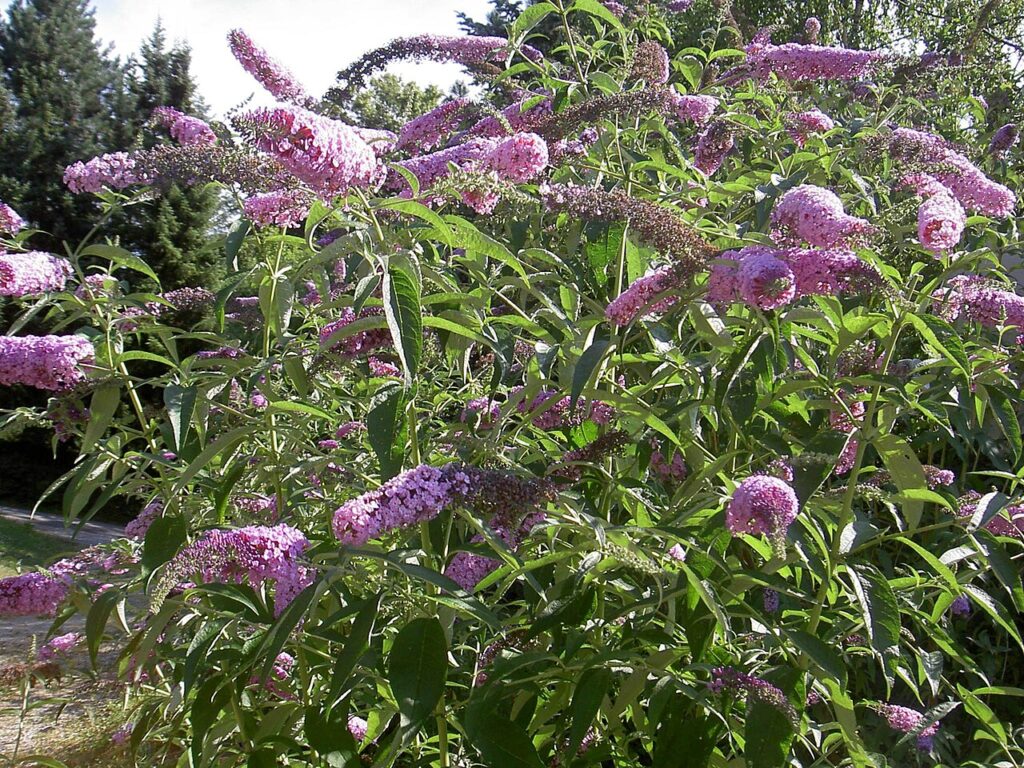
As its name suggests, the butterfly bush is a favorite of butterflies, attracting them with its fragrant, colorful flowers. This plant blooms late in the summer through fall, making it a great food source as the season changes. Butterfly bushes come in a variety of colors, including purple, pink, and white, and thrive in full sun. They are relatively easy to grow, though they prefer well-drained, slightly alkaline soil.
The nectar-rich flowers of the butterfly bush are particularly attractive to long-tongued butterflies. Bees also benefit from its late-season blooms, which provide them with essential food before winter. It is a fast-growing shrub, capable of filling a garden with vibrant color and helping support pollinators. Planting a butterfly bush is an effective way to enhance your garden’s pollinator activity well into fall.
Joe-Pye Weed (Eutrochium purpureum)
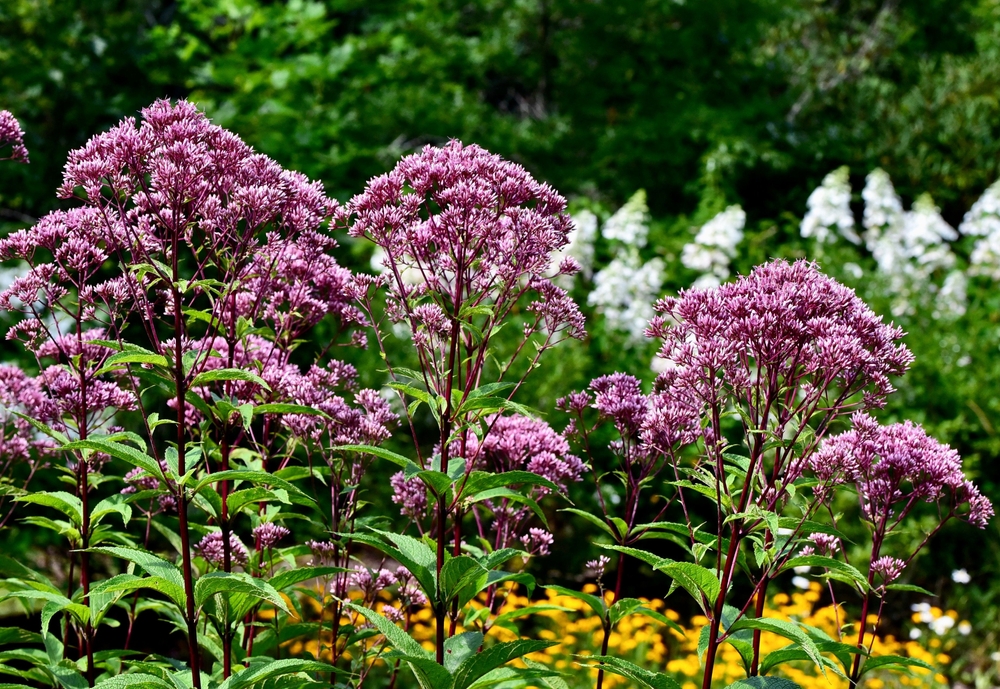
Joe-Pye Weed is a tall perennial that produces large clusters of purple-pink flowers, attracting a wide range of pollinators. Its blossoms bloom from late summer to fall, making it a perfect addition to a pollinator-friendly garden. Joe-Pye Weed thrives in moist, well-drained soil and partial sun, though it can tolerate full sun in cooler climates. The plant’s height can range from 4 to 7 feet, creating a striking focal point in the garden.
The flowers of Joe-Pye Weed are an important nectar source for both bees and butterflies during the fall. Its sweet-smelling blooms attract a variety of pollinators, including the swallowtail butterfly. As one of the last plants to bloom in the fall, it provides a crucial food source for pollinators preparing for the cold months ahead. Joe-Pye Weed is an excellent way to extend the pollinator season in your garden.
Zinnias (Zinnia spp.)
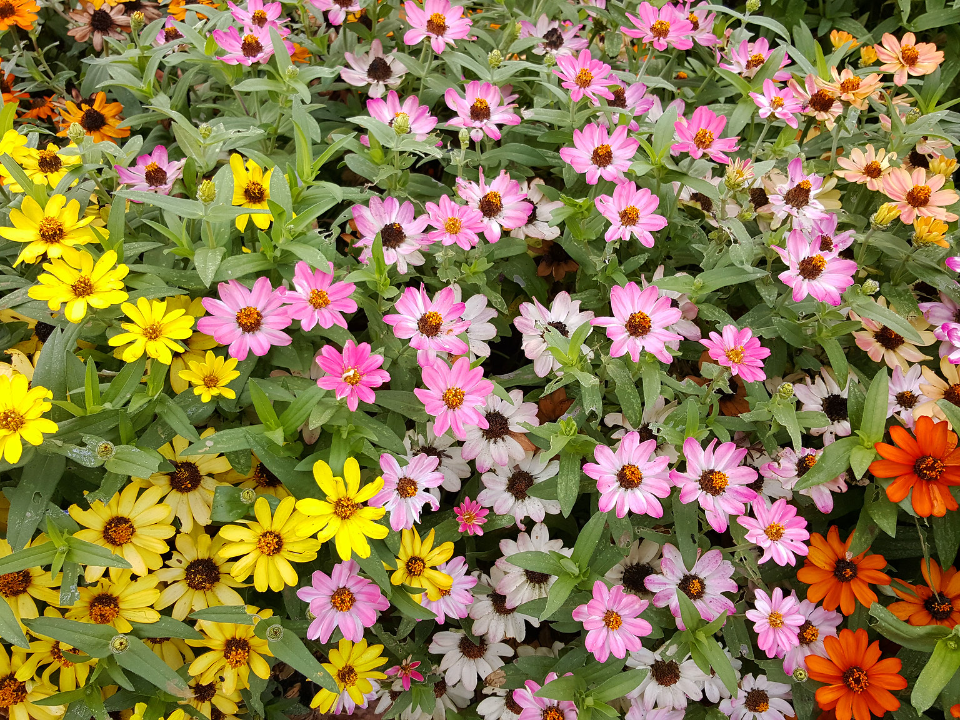
Zinnias are vibrant, easy-to-grow flowers that offer abundant nectar to pollinators throughout the fall. These plants bloom in various colors, from bright pinks to fiery oranges, making them a favorite for both bees and butterflies. Zinnias thrive in full sun and are relatively drought-tolerant, making them a great addition to many gardens. They are particularly beneficial because they bloom continuously from summer into fall.
The open, daisy-like flowers of zinnias provide easy access to nectar, attracting a variety of bee species. Butterflies, including the monarch, are drawn to zinnia flowers for their nectar. Their ability to continue blooming through the fall ensures that pollinators have food late into the season. Zinnias are not only beautiful but also incredibly functional in supporting pollinator populations.
Purple Coneflower (Echinacea purpurea)
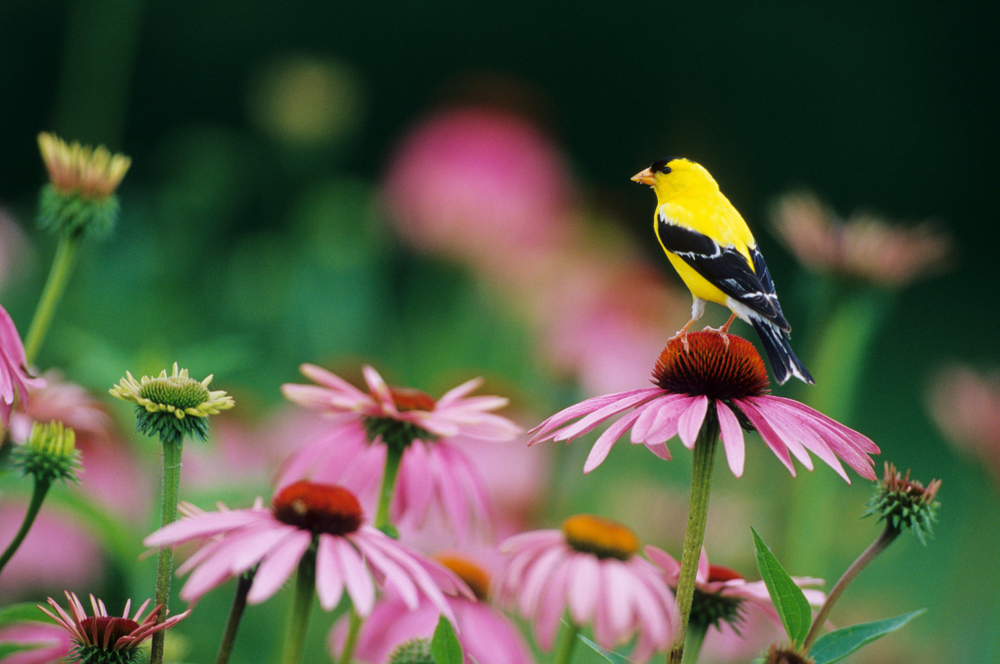
Purple coneflower is well-known for its striking appearance and its value to pollinators. The plant blooms from midsummer into fall, offering bees and butterflies a steady food source. Its large, purple flowers are rich in nectar and easy for pollinators to land on. Purple coneflower is a drought-tolerant plant that thrives in full sun and well-drained soil, making it a hardy addition to most gardens.
The flower’s unique, spiny seed heads are another attraction for pollinators. As the season progresses, coneflowers continue to support bees and butterflies with their long-lasting blooms. Their strong, upright structure makes them easy to spot in the garden, and they are especially attractive to honeybees. This plant is also beneficial for wildlife beyond pollinators, making it a great overall garden addition.
New England Aster (Symphyotrichum novae-angliae)
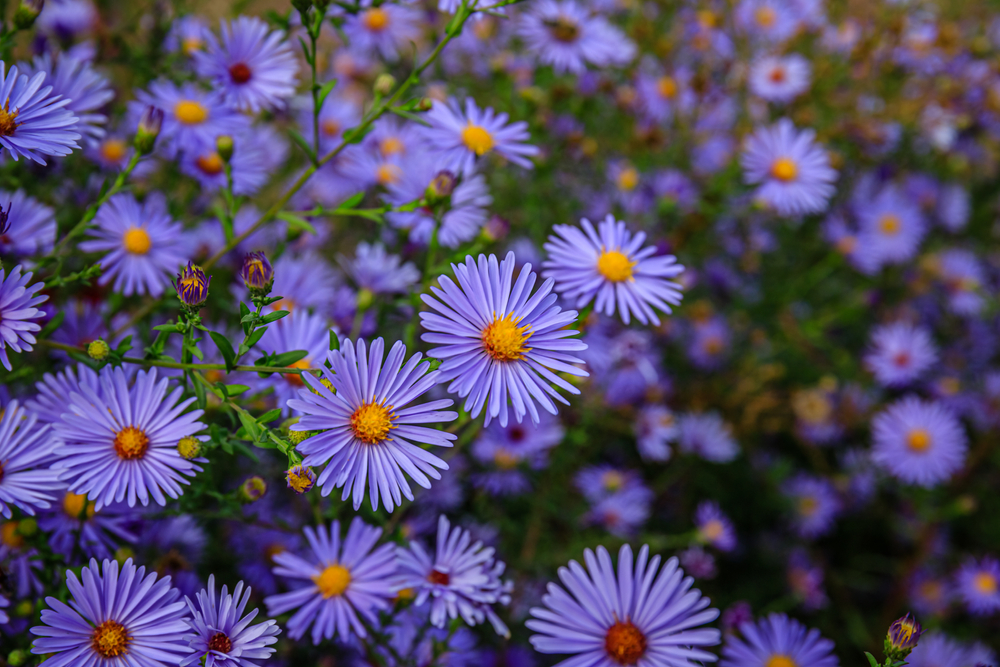
New England aster is a late-blooming perennial that provides vital nectar for pollinators during the fall months. Its purple flowers are a favorite for bees and butterflies, who rely on the plant for energy as the season ends. This plant grows well in full sun and prefers moist, well-drained soil, though it can tolerate a variety of conditions. Its large, daisy-like flowers add color and life to gardens in the late season.
The blooms of New England aster attract many species of butterflies, including the painted lady and monarch. Bees, especially honeybees, frequent the flowers for their rich nectar. The plant’s height and vibrant colors make it a standout in any garden, while its late-season blooms make it essential for pollinators. New England aster is a great way to help bees and butterflies prepare for the coming colder months.
Sunflower (Helianthus annuus)
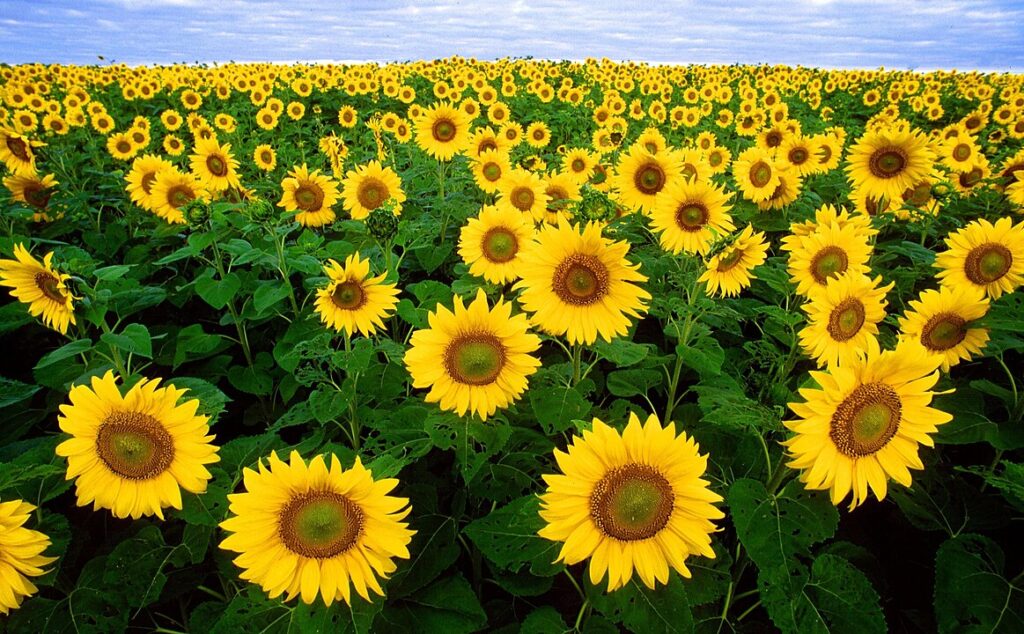
Sunflowers are not only known for their beauty but also for being a valuable food source for pollinators. Their large, yellow blooms attract bees and butterflies from miles away, offering an abundance of nectar. Sunflowers thrive in full sun and are easy to grow, making them a great addition to almost any garden. They bloom in late summer and fall, providing late-season food for pollinators.
As the sunflower heads mature, they offer seeds that are enjoyed by many species of birds, as well as being a favorite of bees and butterflies. Their towering stems and large blooms make them stand out in the garden, while their rich nectar supports a wide variety of pollinators. Sunflowers are a great choice for gardeners looking to attract bees, butterflies, and even birds. This cheerful plant ensures that your garden remains lively through the fall.
Helenium (Helenium autumnale)
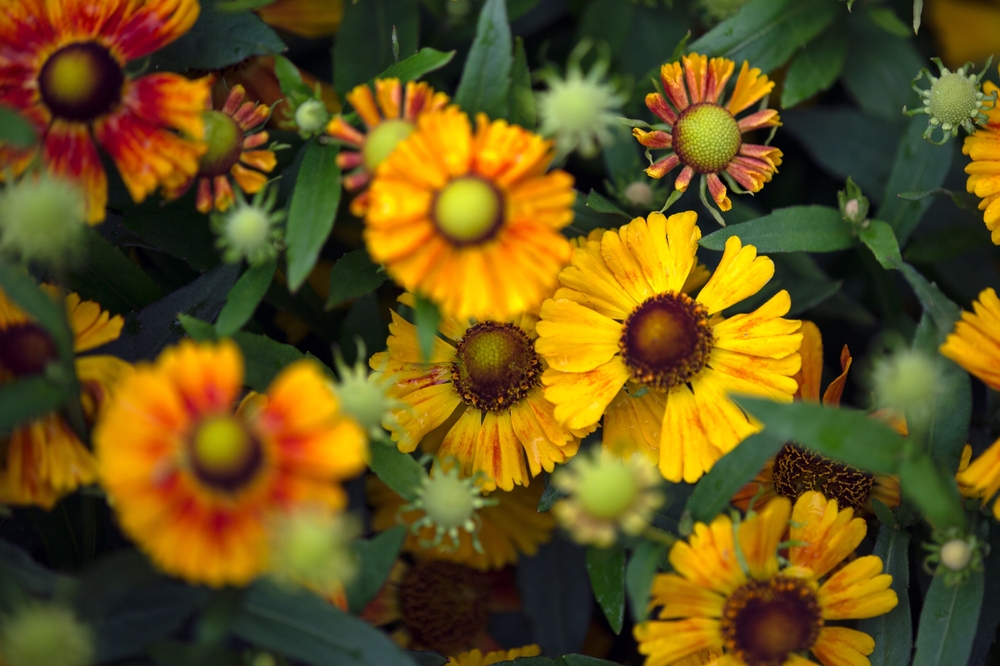
Helenium, also known as sneezeweed, is a late-blooming plant that offers valuable food for pollinators. Its brightly colored flowers, ranging from yellow to red, attract both bees and butterflies. Helenium thrives in full sun and well-drained soil, making it a perfect fit for a fall garden. Its long-lasting blooms help sustain pollinators as the season progresses.
The flowers of helenium are rich in nectar, and they remain attractive to pollinators through the fall. Butterflies such as the painted lady and bees are frequent visitors to its vibrant blooms. This plant is also beneficial for pollinators because it can withstand heat and drought, making it a resilient addition to your garden. Adding helenium helps extend the food supply for pollinators late into the season.
Fall-Blooming Crocus (Crocus spp.)
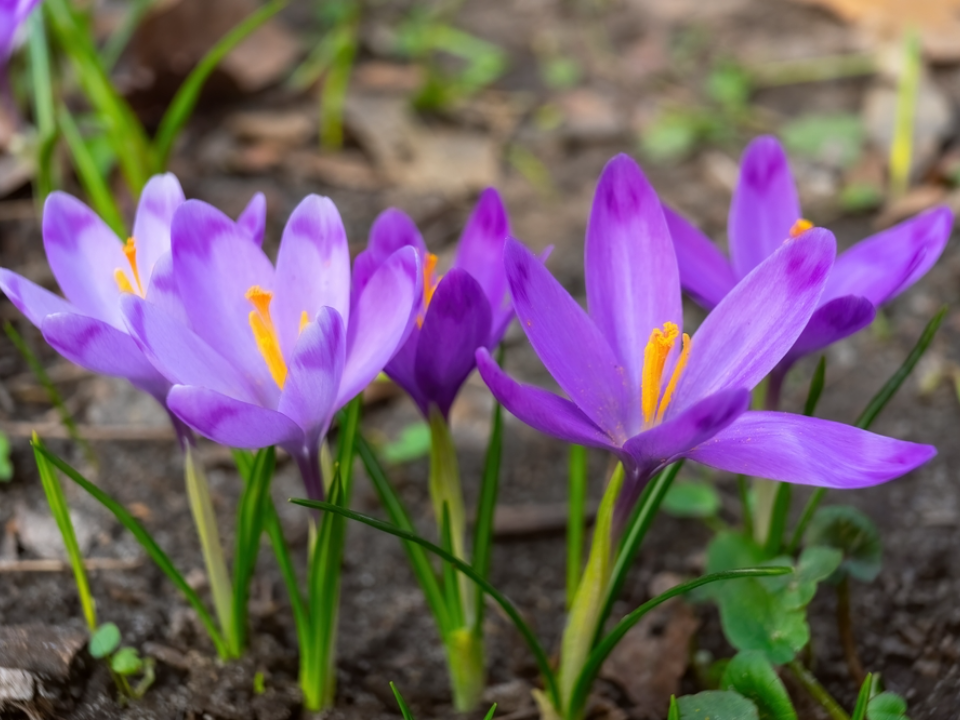
The fall-blooming crocus provides an early food source for pollinators, especially as the season changes. While crocuses are often associated with spring, the fall variety blooms in late autumn, offering nectar when many other flowers have faded. The crocus thrives in well-drained soil and full sun, making it a perfect choice for smaller gardens or garden beds. Its delicate flowers bloom in shades of purple, yellow, and white.
The crocus is often one of the first flowers to bloom in fall, signaling a fresh nectar source for bees and butterflies. Its simple, open flowers are easy for pollinators to access, and they provide an essential early food source before the colder months arrive. Crocuses are also known for their ability to naturalize, meaning they will come back year after year. This hardy plant can help ensure a continued supply of food for pollinators in the fall.
Verbena (Verbena bonariensis)
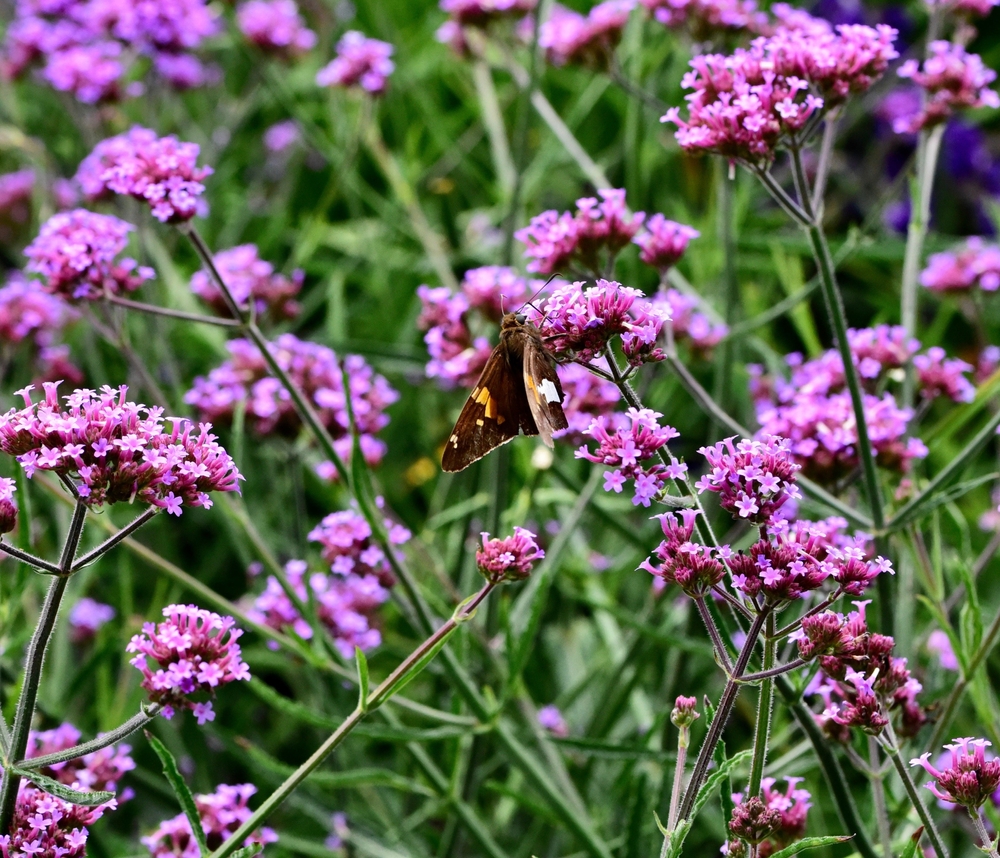
Verbena is a versatile, long-blooming plant that provides food for pollinators well into the fall. Its small, clustered flowers come in shades of purple and pink, which are highly attractive to bees and butterflies. Verbena grows best in full sun and well-drained soil, making it a low-maintenance addition to any garden. It can handle a range of conditions and continues to bloom late in the season.
The nectar-rich flowers of verbena draw in a wide variety of pollinators, including honeybees, bumblebees, and butterflies. Its height and airy structure make it an excellent choice for filling gaps in a garden, while also providing food to important insects. Verbena blooms until the frost, making it a long-lasting addition to the fall garden. Adding verbena will ensure that your garden supports pollinators throughout the season.
Calendula (Calendula officinalis)

Calendula, often referred to as pot marigold, is a cheerful flower that continues to bloom in the fall. Its bright orange and yellow blooms attract bees, butterflies, and other pollinators seeking nectar in the cooler months. Calendula is easy to grow, thriving in full sun and well-drained soil, and it can tolerate a range of temperatures. The plant’s edible flowers are not only attractive to pollinators but also serve as a beneficial companion plant for other garden species.
The flowers of calendula are rich in nectar, and the plant blooms well into fall, providing vital sustenance for bees and butterflies. Its vibrant colors are particularly striking against the backdrop of autumn, and it also offers medicinal properties for humans. Calendula is a fantastic choice for gardeners looking to attract pollinators while adding color to the garden. With its long-lasting blooms, calendula helps support pollinators right up until the frost.
Russian Sage (Perovskia atriplicifolia)
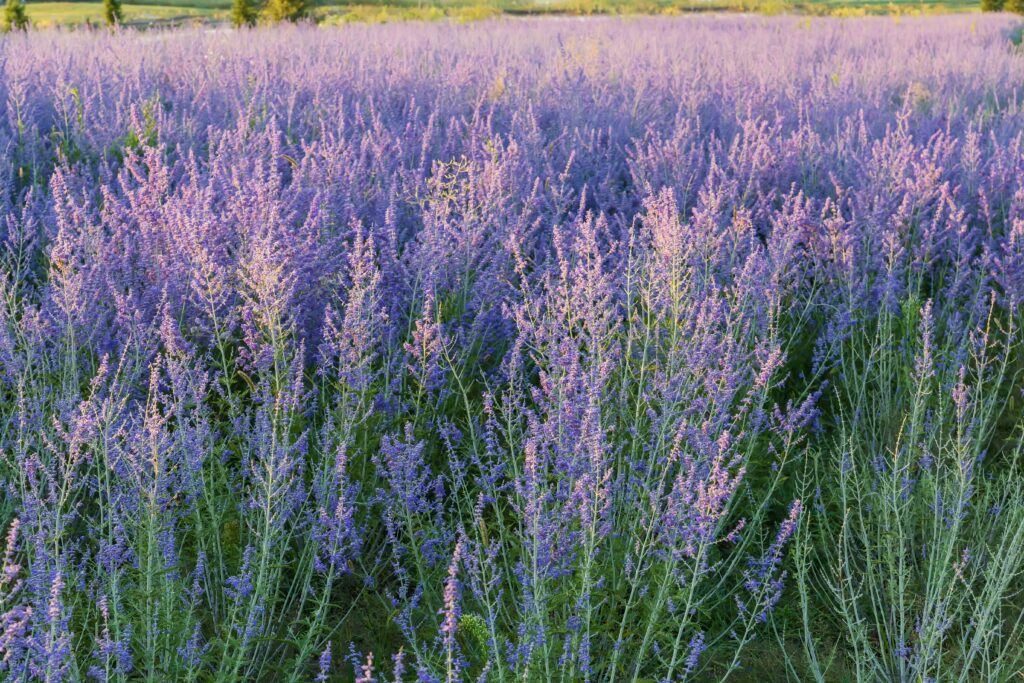
Russian sage is a hardy, drought-tolerant plant that continues to bloom through the fall. Its long spikes of lavender-blue flowers are highly attractive to pollinators, especially bees. This plant grows well in full sun and well-drained soil, making it an easy addition to a low-maintenance garden. Russian sage thrives in hot, dry conditions, making it a perfect choice for gardeners in warmer climates.
The fragrant, airy blooms of Russian sage are rich in nectar, providing a consistent food source for pollinators during the fall. Bees particularly favor this plant, making it a great addition to a bee-friendly garden. Russian sage’s tall, wispy structure adds vertical interest to the garden while supporting pollinators. Adding this plant will help ensure that your garden continues to nourish pollinators throughout the season.
Hops (Humulus lupulus)
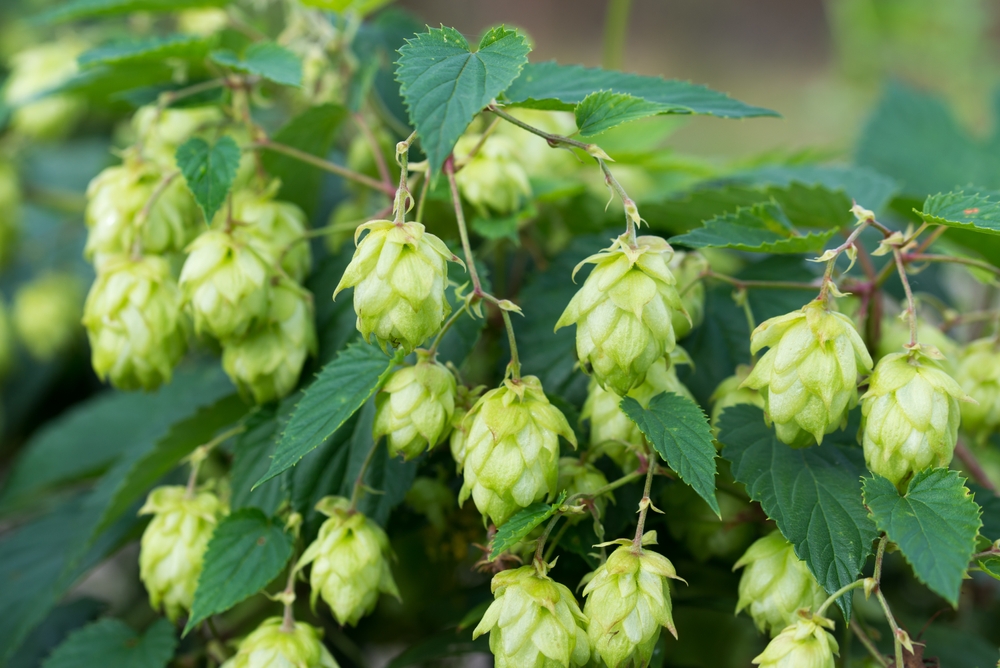
Hops are often associated with brewing, but their flowers also provide a valuable food source for bees and butterflies. These climbing plants produce small, cone-shaped flowers that attract pollinators looking for nectar in the late fall. Hops grow best in well-drained soil and full sun, and they can cover fences or trellises, making them both functional and ornamental. Their rapid growth and trailing nature make them a great option for vertical gardening.
The flowers of hops bloom in late summer and continue into fall, offering late-season nourishment for bees and butterflies. As a perennial, hops return each year, providing a steady source of food for pollinators. The plant’s climbing nature means it can add beauty and coverage to garden structures while helping local pollinator populations. Consider planting hops if you want to create a sustainable, pollinator-friendly garden space.
This article originally appeared on Avocadu.
